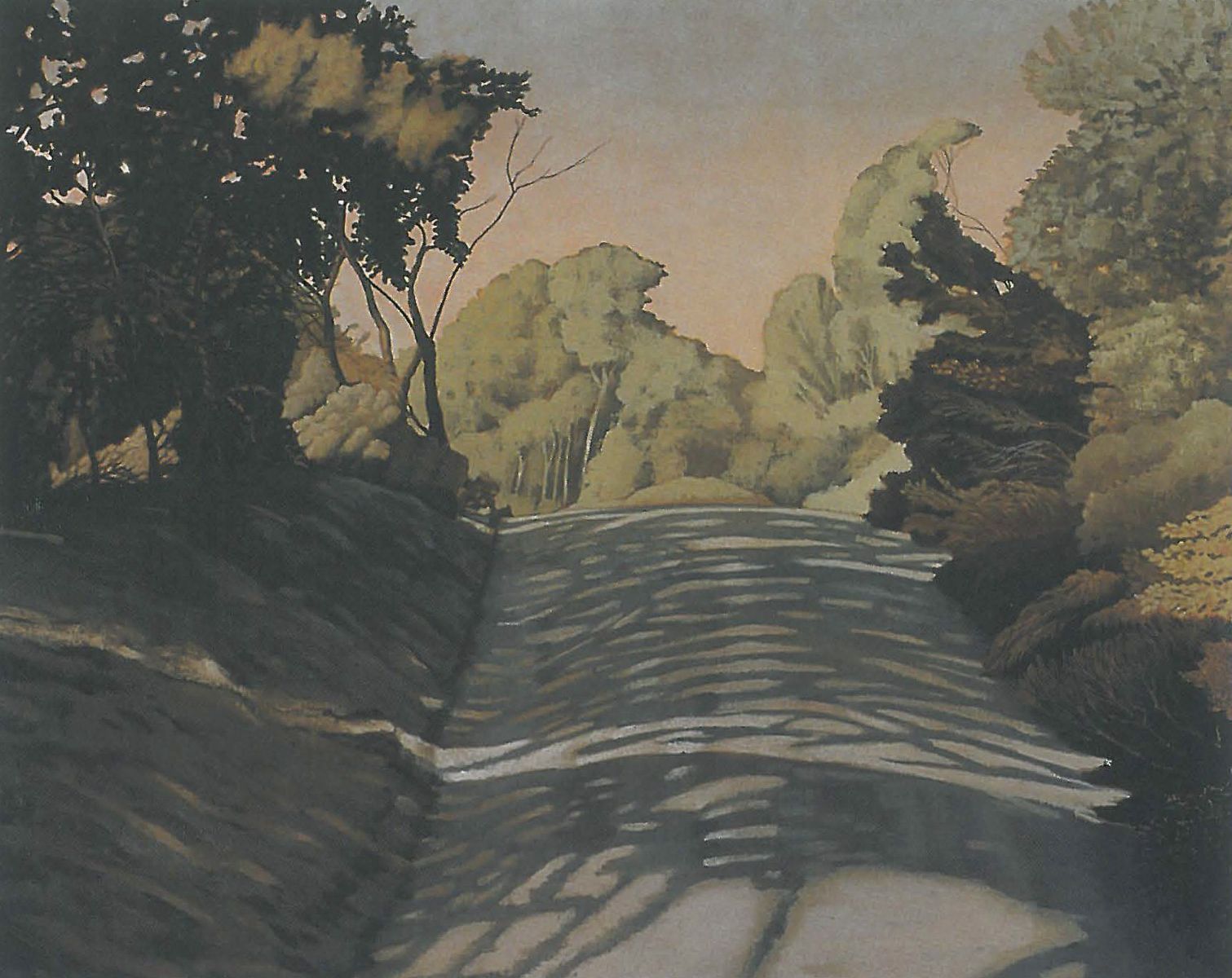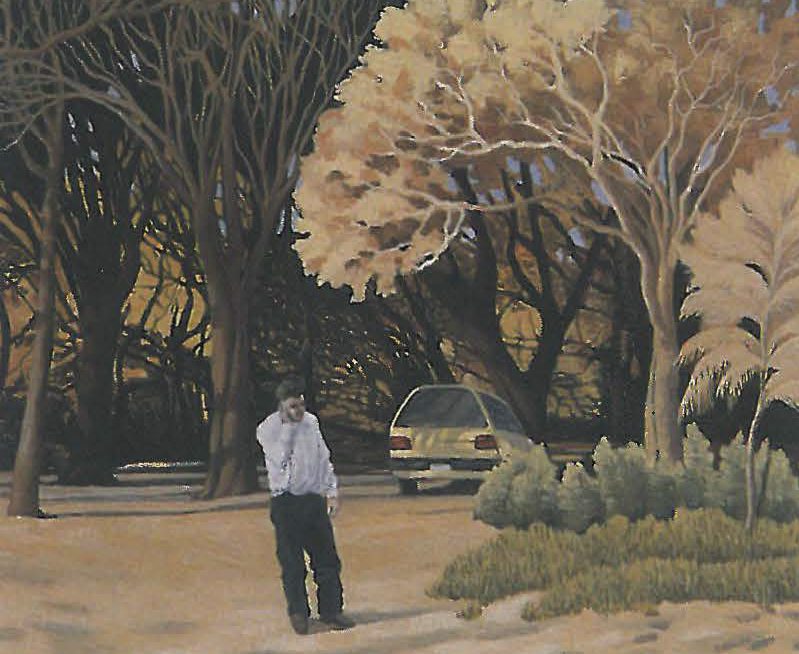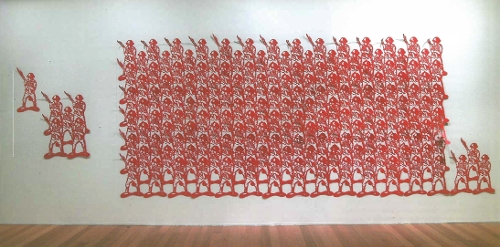
Somehow I think that the sublime no longer resides in the vista. You stand on the mountaintop knowing that a satellite is somewhere above you or that a jet might fly over you.
- David Keeling, catalogue, Niagara Gallery, 2001.
Rather than evoking notions of untouched wilderness or idyllic Romantic vistas, in this exhibition of landscape paintings titled Narrative, Sweet Narrative, Keeling has depicted familiar places - such as nature reserves and parking spots - in which prosaic suburban dramas might unfold. Like tracts of bushland hemmed in by suburbia, these strips of nature appear degraded. Bereft of birds and wildlife, traversed by tracks and pathways, evidence of human presence is everywhere apparent.
Man's relationship to the environment is an ongoing concern in Keeling's work. Keeling rejects the idea of a pristine natural environment devoid of human presence or the idea of the landscape offering glimpses of the divine. Rather he insists on the acknowledgement of human integration within the natural realm; the impact of human presence on shaping the landscape; the construction of landscapes in Western art history; and the way ideas and beliefs impact on how we perceive landscape.
In the oddly disturbing image Good Line, oil on linen, a pale butter-yellow hatch-back is discreetly parked in a small bush clearing. A middle-aged man dressed in a white shirt and slacks stands behind the car making a call on his mobile phone - he seems to be waiting for someone. In Good Spot, perhaps later on the same day, shadows envelop the clearing and throw a blanket of darkness over the parked car. The awkward banality of the imagery and the juxtaposition of a diminished nature and urban culture suggests that the relationship between humanity and the natural environment is not benign.

Keeling depicts strangers who appear to be entangled in very ordinary human narratives. Three youths are depicted rambling down a well-trodden track, and a man and woman in a bright red coat engage in an intense conversation in a secluded glade. While the figures remain anonymous their gestures, clothing and paraphernalia suggest a middle-class lifestyle and an ease in the bush. There is no intimation of idealistic visions or awe; no existential angst or sense of alienation at the fringe of society; no sense of danger. This nature is tame.
Even in the landscapes where Keeling has not included figures nature appears to have been subdued and made accessible, unruly fecundity repressed, rot and decay tidied up. In Road Out a smooth well-maintained dirt road sweeps around a corner cutting through the bush. Several of the images include gently undulating pathways – one clearly named and signposted. Close-up glimpses of the ground underfoot in Ground 1 & Ground 11 reveal minutiae of human detritus scattered amid small stones and broken twigs on the dry well-trodden earth - a couple of dead matches, cigarette butts and a discarded ticket.
Human intervention and the obsessive desire to dominate and manipulate nature was explored in an earlier series of paintings by Keeling in which he depicted exquisitely beautiful, though tortuously controlled, bonsai trees. While less intentionally perverse, the irrepressible human tendency to domesticate, improve and tame while indulging the desire to engage with the natural environment depicted in these paintings is perhaps even more disturbing.












